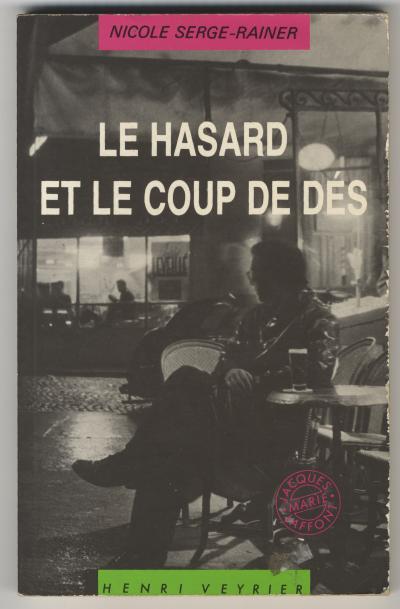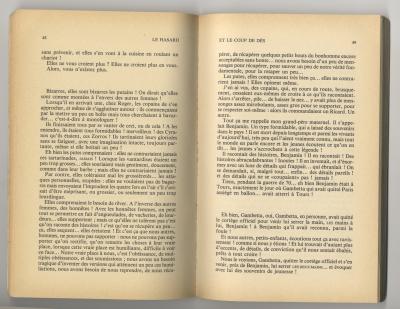LE HASARD ET LE COUP DE DÉS
Marsat: Éditions Henri Veyrier, 1984
230 x 150 mm, 119
Offset, perfect binding
Nicole Serge-Rainer's anti-hero, "good man and poor guy", as he defines himself, makes the front page of a bloody news story. Taken hostage by Sermine, public enemy number 1 - barely disguised pseudonym of Mesrine, whose story appears implicitly throughout the story - he miraculously escapes the shooting. Lying on a hospital bed, this paranoid taciturn has a secret; it is this secret that he tells. Disdained by his wife, despised by his children, ridiculed by his bistro companions, without a future because without a present and without a past, his life oscillates between resignation and revolt. One day, however, things get better. He reads a facsimile of a letter from Sermine in a newspaper and discovers that they have the same handwriting. Fascinated by the coincidence, he decides to take on the personality of the gangster and send press releases - which he signs Sermine. While the latter continues to hit the headlines, he shapes a new face - immediately conveyed by the media.
He is Sermine much more than Sermine himself... until the day when, ironically, "chance, which a throw of the dice will never abolish", according to Mallarmé's famous formula, brings them together for the first and last last time in the back room of a cafe. A novel of despair and refusal, N. Serge-Rainer's book is also a political fable in which the State, the family, work, religion and morality are undermined in turn, without forgetting the values refuge that is love and friendship.
Backcover text

